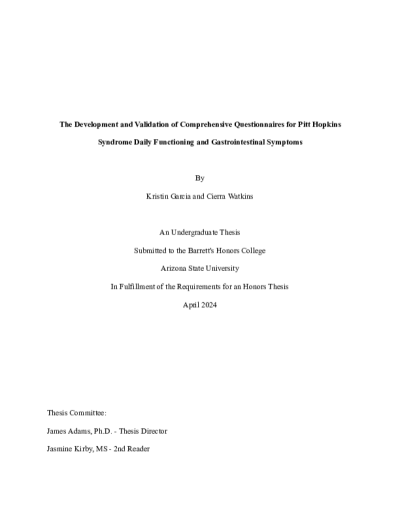

The purpose of this project was to develop a new questionnaire that was comprehensive and included symptoms of autism and related disorders. 28 parents of children with autism and two adults with autism were interviewed and asked to fill out the questionnaire and rate their child’s symptoms based on the available scale. From their responses, we were able to edit and improve the questionnaire to make it clearer and more concise. We added new symptoms and improved the descriptions of the symptoms listed. The new version of the questionnaire will be edited after interviewing the same 30 people again. After, it will need to be validated by a large study of around 300 people. The questionnaire will be used in an app format and help parents rate their child’s symptoms during clinical studies of medical treatments.



OLEDs employing step-wide graded-doped emissive layers were designed to improve charge balance and center the exciton formation zone leading to improved device performance. A red OLED with a peak efficiency of 16.9% and an estimated LT97 over 2,000 hours at 1,000 cd/m2 was achieved. Employing a similar structure, a sky-blue OLED was demonstrated with a peak efficiency of 17.4% and estimated LT70 over 1,300 hours at 1,000 cd/m2. Furthermore, the sky-blue OLEDs color was improved to CIE coordinates of (0.15, 0.25) while maintaining an efficiency of 16.9% and estimated LT70 over 600 hours by incorporating a fluorescent sensitizer. These devices represent literature records at the time of publication for efficient and stable platinum phosphorescent OLEDs.
A newly developed class of emitters, metal-assisted delayed-fluorescence (MADF), are demonstrated to achieve higher-energy emission from a relatively low triplet energy. A green MADF device reaches a peak efficiency of 22% with an estimated LT95 over 350 hours at 1,000 cd/m2. Additionally, a blue charge confined OLED of PtON1a-tBu demonstrated a peak efficiency above 20%, CIE coordinated of (0.16, 0.27), and emission onset at 425 nm.
High triplet energy hosts are required for the realization of stable and efficient deep blue emission. A rigid “M”-type carbazole/fluorene hybrid called mDCzPF and a carbazole/9-silafluorene hybrid called mDCzPSiF are demonstrated to have high triplet energies ET=2.88 eV and 3.03 eV respectively. Both hosts are demonstrated to have reasonable stability and can serve as a template for future material design. The techniques presented here demonstrate alternative approaches for improving the performance of OLED devices and help to bring this technology closer to widespread commercialization.
